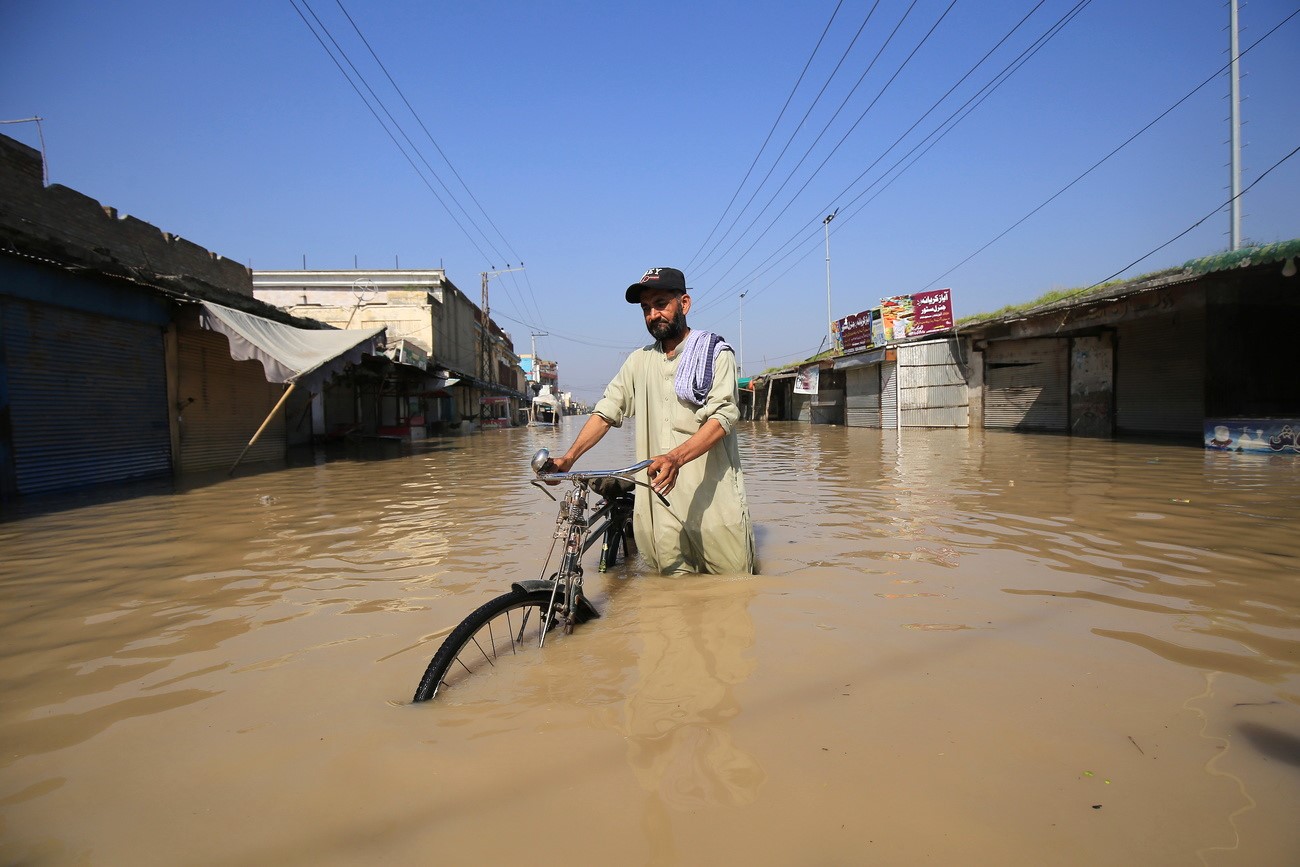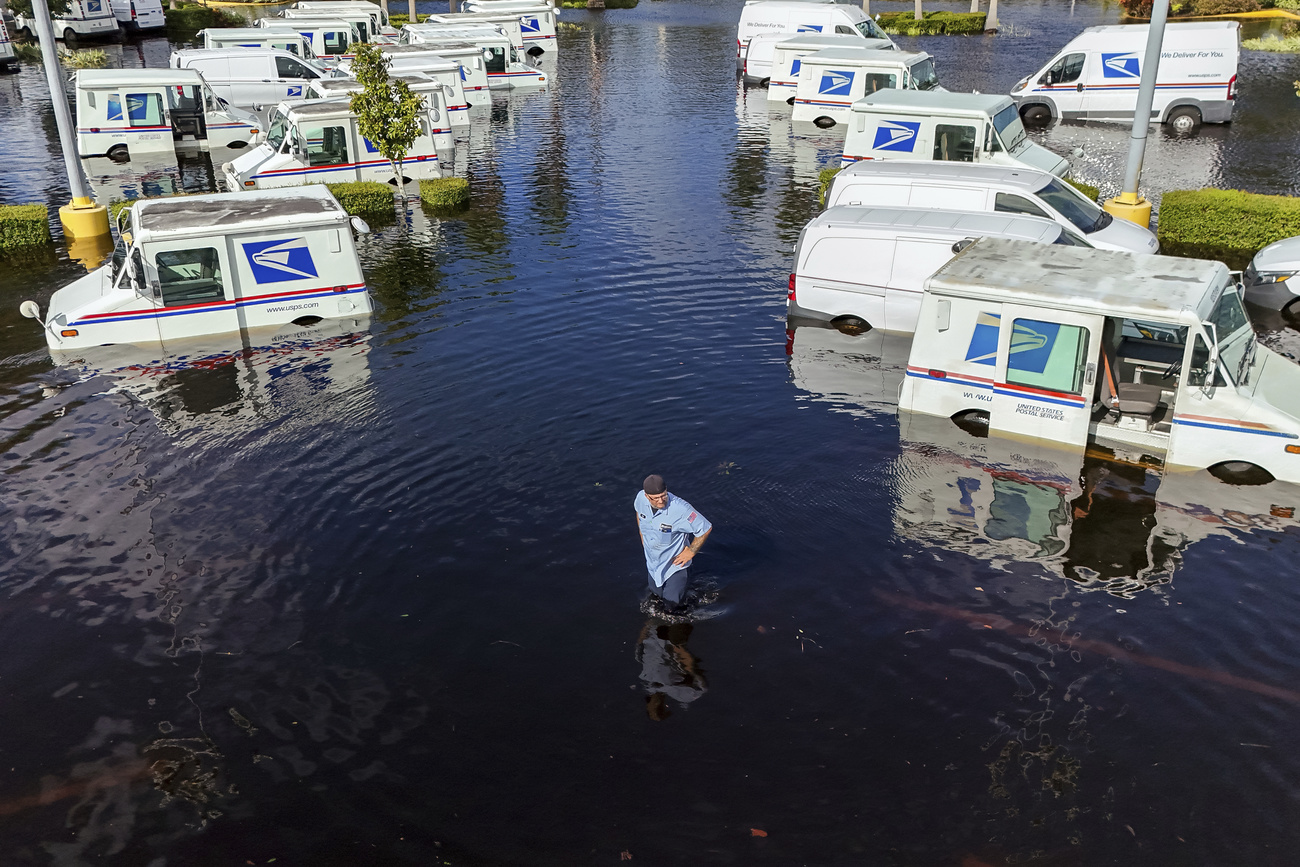Switzerland to call for climate finance contributions from China and Russia at COP29

Switzerland wants the biggest CO2 emitters in the developing world, such as China and Russia, to offer financial help to poorer nations combating climate change. The controversial proposal will be tabled at the UN Climate Change Conference (COP29) opening today in Baku, Azerbaijan.
Replacing a coal-fired power plant with a renewable energy plant, building levees to prevent flooding, or promoting drought-resistant agricultural techniques: these are essential measures to reduce CO2 emissions and adapt to climate change. Such actions are especially urgent in countries that are most vulnerable to global warming. Often these countries, like Pakistan or Somalia, have not contributed to the increase in emissions and lack the resources needed to act.
Until now, the question of who should fund the transition to a low-emissions society and solutions for greater climate resilience in these countries has landed on the world’s richest countries. The logic goes that those who bear the greatest responsibility for emissions that cause climate change should pay up.
But this decades-old rationale is now being challenged. The world has changed, and countries that were once only responsible for a small fraction of global emissions, such as China or Saudi Arabia, are now among those emitting the most CO2. Should they then also contribute to funding climate projects in poor countries?

More
Newsletters
This is a key question to be answered at the United Nations Climate Change Conference (COP29External link) being held in Baku, Azerbaijan, starting this week. The summit is expected to adopt a new target for climate financeExternal link, with representatives from nearly 200 countries, including Switzerland, set to discuss who should contribute and how much.
Switzerland, together with Canada, is the first country to propose clear criteria for extending the base of donor states in a proposal being tabled at COP29.
“No one disputes the fact that developed countries have a duty to participate in climate financing,” Felix Wertli, Switzerland’s chief negotiator at COP29, tells SWI swissinfo.ch. “However, we believe that developing countries that today generate a lot of emissions and have the economic capacity to do so should also contribute.”
>> The animation below shows how CO2 emissions have evolved in the world’s major economies:
Current contributions to poor countries are insufficient
The UN Framework Convention on Climate Change (UNFCCC) adopted in 1992 defines which countries are required to provide financial aid to the rest of the planet. These nations – among them the United States, members of the European Union, Switzerland, the United Kingdom and Japan – committed in 2009 to providing $100 billion (CHF87.5 billion) annually by 2020. The target was met, but not until 2022.
As the climate crisis intensifies, however, more money is needed. Developing countries need about five times as much, or some $500 billion a yearExternal link, to stave off the effects of global warming, according to the UN. That estimate has been deemed insufficient by India and African states, who argue that the overall amount should be at least $1 trillion per year.

“The more we extend the list of donor countries, the higher the total amount of the new goal can be,” says Wertli. And, he argues, if all countries in a position to do so contribute to the target, Switzerland and other industrialised nations may be more inclined to increase climate finance because they know the effort is a joint one.
The European UnionExternal link, the US and other developed states are also asking developing countries that generate a lot of emissions and have had strong economic growth to participate in funding. The request is directed particularly at ChinaExternal link, which has become the world’s largest CO2 emitter.
China, Russia and Gulf states on Swiss list of donor countries
Switzerland proposes to expand the group of donor countries based on two models. The first considers the ten largest emitters of CO2 that also have a gross national income per capita, adjusted for purchasing power parity, of more than $22,000.
This group would include Saudi Arabia, Russia and China. India, Brazil and Indonesia, among the most populous and most polluting nations on the planet, would be excluded.
Another proposed model takes into account countries with cumulative emissions of at least 250 tonnes per capita from 1990 and adjusted gross national income per capita of more than $40,000.
This scenario would include almost all of the Gulf states – Saudi Arabia, the United Arab Emirates, Qatar, Kuwait, and Bahrain – plus Singapore, South Korea, Israel, Poland, and the Czech Republic.
The Overseas Development Institute (ODI), an independent think tank based in London, comes to a similar conclusionExternal link. Qatar, Singapore and Israel would be eligible to provide financial aid, according to the ODI.
“When it comes to which other countries should contribute to this finance in addition to wealthy countries, this should be nationally determined and self-led: that’s the spirit of the Paris Agreement,” Laetitia Pettinotti, an ODI economist, tells SWI swissinfo.ch.
Strengths and weaknesses of the Swiss proposal
The Swiss proposalExternal link to broaden the pool of donor countries is a “pragmatic response” to the growing urgency of climate action, says Brurce Mecca of the Climateworks Center at Monash University in Australia. “Its strength lies in recognising that responsibility for climate should not solely rest on traditional donor countries,” he tells SWI swissinfo.ch.

More
COP29: Switzerland and the world under pressure to deliver carbon cuts
However, this approach should not dilute the accountability of those countries that have benefited the most from fossil-fuel-driven industrialisation, says Mecca. “There is a risk that wealthier countries could sidestep their climate finance obligations by placing an undue burden on emerging economies like China, Saudi Arabia and potentially even middle-income countries.”
For Bertha Argueta of Germanwatch, a developmental and environmental NGO, the Swiss model has the advantage of allowing new countries to be included as contributors once they have reached the established thresholds of emissions and wealth.
“This will avoid the need to reopen these negotiations again in some years,” she says.
But the expert questions Switzerland’s real intent. Many other methodologies consider emissions in per-capita terms, which would exclude China. More recent studiesExternal link have introduced other relevant factors, such as a country’s development needs. Argueta suspects that Switzerland has drafted a proposal already having in mind certain candidate countries, for political reasons, without naming them openly.
Another weakness in the Swiss proposal is the failure to consider vulnerability to climate change, according to Imogen Outlaw of the NewClimate Institute.
Every country must contribute to climate goal
Emerging economies opposeExternal link a revision of the donor pool. Lin Jian, a spokesperson for China’s foreign ministry, saidExternal link that developed countries should take their historical due responsibility for future climate finance agreements and not shift the responsibility to developing countries.
China, like other emerging economiesExternal link, already finances projects for fossil fuel replacement and climate adaptation in other developing countries. However, it does so on its own terms, within the framework of South-South collaboration. Between 2013 and 2022, China provided an average of $4.5 billion per yearExternal link. By comparison, the Swiss contribution under the UNFCCC in 2023 was CHF847 million francs ($970 million).
Swiss negotiator Wertli acknowledges the financial commitment of China and other developing countries but says it lacks transparency. “We don’t know whether these are just loans or financing tied to certain claims,” he says.
The Swiss proposal has little chance of success at COP29. But it could increase pressure on some states, encouraging them to participate in public climate finance on a voluntary basis and to transparently report their contribution to the UN, without giving up their status as a “developing country”.
“We are not interested in changing the classification of countries,” Wertli says. “We just want all countries to contribute to the new collective financial goal according to their means. Only in this way could we reduce emissions and limit global warming to 1.5 degrees Celsius.”
Edited by Veronica De Vore. Translated from Italian using DeepL/lj/gw

In compliance with the JTI standards
More: SWI swissinfo.ch certified by the Journalism Trust Initiative









You can find an overview of ongoing debates with our journalists here . Please join us!
If you want to start a conversation about a topic raised in this article or want to report factual errors, email us at english@swissinfo.ch.